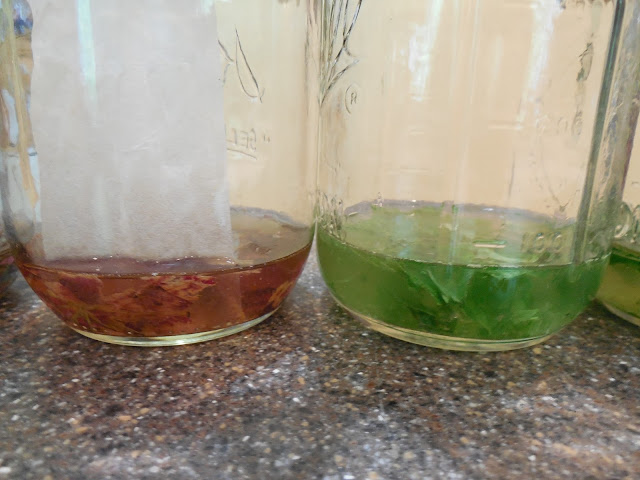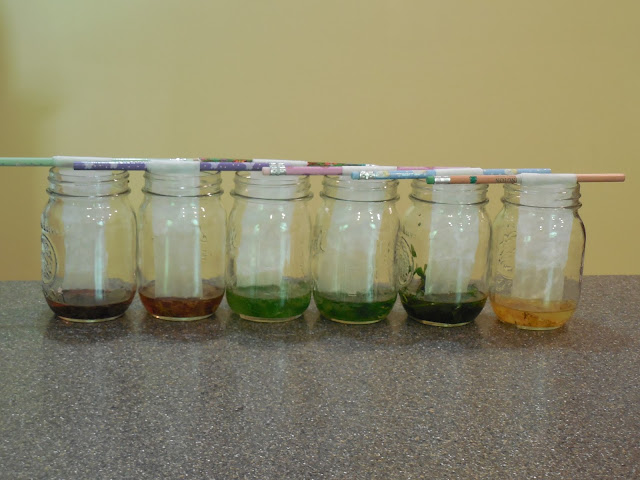I love it when I find a renewed
curiosity in something I've seen many times before. This summer while
spending a few days on vacation at a New England pond, I spied some
mussels in the shallow water near the shore. This was not really
shocking, as I remember finding them in the lake and this same pond
as a kid. However, I looked at these creatures with a new sense of
wonder. First of all, there were a lot more than I remembered. What
did this mean? Were the water conditions better or worse? A lot of
people fish this pond, do they also collect and eat freshwater
mussels? How quickly could these creatures bury themselves in the
sand?
 |
| Mussels peaking out of the mud and sand. ©SBF 2015 |
I picked a few out of the water to
inspect more closely. They quickly pulled themselves shut tight once
they sensed something was plucking them from their peaceful mud. I
didn't keep them out of the water long, suffering pangs of guilt
remembering how I used to enjoy throwing them back into the lake when
I was young. Sorry mussels! I put these back into the water, one back
in the hole I plucked it from and two on their sides, hoping to
observe and determine how long it would take them to burrow back
down.
 |
| ©SBF 2015 |
Unfortunately we had some bad storms
come through so I wasn't able to check on my science experiment. When
I checked the next day, there was only the mussel that I had stuck in
the mud, the others had moved on. Upon further research once
returning home, I found that these fairly uninteresting looking
mollusks are actually really fascinating animals. Mollusks are
invertebrates with soft unsegmented bodies and in most cases outer
shells, a very large and diverse group that spans from octopus to
shellfish. The mussel is a bivalve, it has two shells that are held
together by a strong ligament. Freshwater mussels have a strong,
large foot which they move through the sand or gravel with. Mussels
have strong muscles (isn't that funny?) to help them open and close
their shells tight when necessary. They are filter feeders that
siphon water into their shells, filter bits of debris and plankton in
to eat and then pump the waste water back out.
 |
| It's like a mussel garden on the bottom of the pond©SBF 2015 |
Freshwater mussels are helpful in
keeping waterways clean and are important indicator species as they
take in any toxins that might be in the water. Where there are many
mussels it can mean that the water quality is good. Although I have
no data on the population size of these creatures decades ago
compared to now, in my estimation there were many more then when I
was a kid and the water was more clear. There are many types of
freshwater mussels and many are threatened or are listed as species
of concern due to declining populations. I believe the mussels I
observed were Eastern elliptio, which is a species that has a stable
population. I did not learn whether people collect and eat these, but
the local Department of Environmental Services urges people not to
consume them as they accumulate any pollution that might be in the
water in their bodies through their filtration systems.
I also learned from
this blog post by
Northeastern Ecological Services
that mussels have some pretty funny common names, like monkeyface and
strange floater! I guess when you study mussels for a living you
probably have a good sense of humor!
I have always loved seashells and now
as an adult I appreciate the ones with inhabitants just as much as
those I can collect for souvenirs. If you or your children enjoy
collecting shells, or observing life near a body of water,
particularly by the ocean, I highly recommend "Seashells by the Seashore" by Marianne Berkes, illustrated by Robert Noreika. In this lovely picture book with rhyming text a girl collects seashells for her grandmother. There is an educational piece about each type of shell she collects at the end of the story.
 |
| Click book images for more information! |

Another great book for exploring seashells is "Next Time You See a Seashell" by Emily Morgan. It has excellent photographs and encourages young readers to observe deeply.


For exploration around the pond I love
"Around the Pond: Who's Been Here?" by Lindsay Barrett George. Another
beautifully illustrated book where a brother and sister use
observations and natural clues to determine what animals live near
the pond. It works very nicely as a guessing game for elementary aged
children.


(These book links are all affiliate links, see disclosures for more info)
If you'd like to teach about mollusks
in your classroom or at home, you might find these resources helpful:
Directions and questions for facilitating a touch tank
Biodiversity and evolutionary tree activity using seashells- click on "downloads" section for
materials
Have fun exploring!
 (affiliate link)
(affiliate link)








































